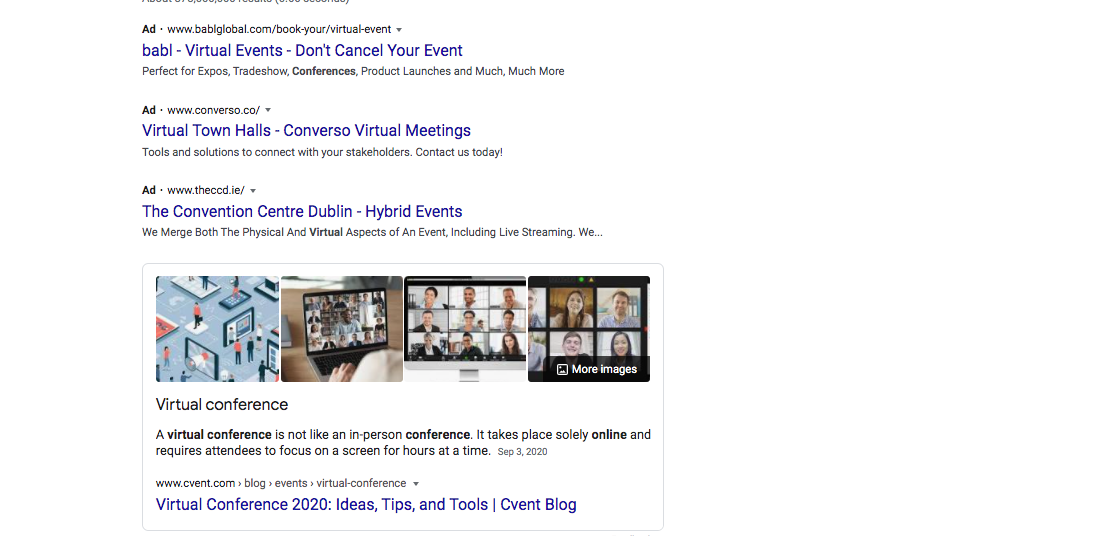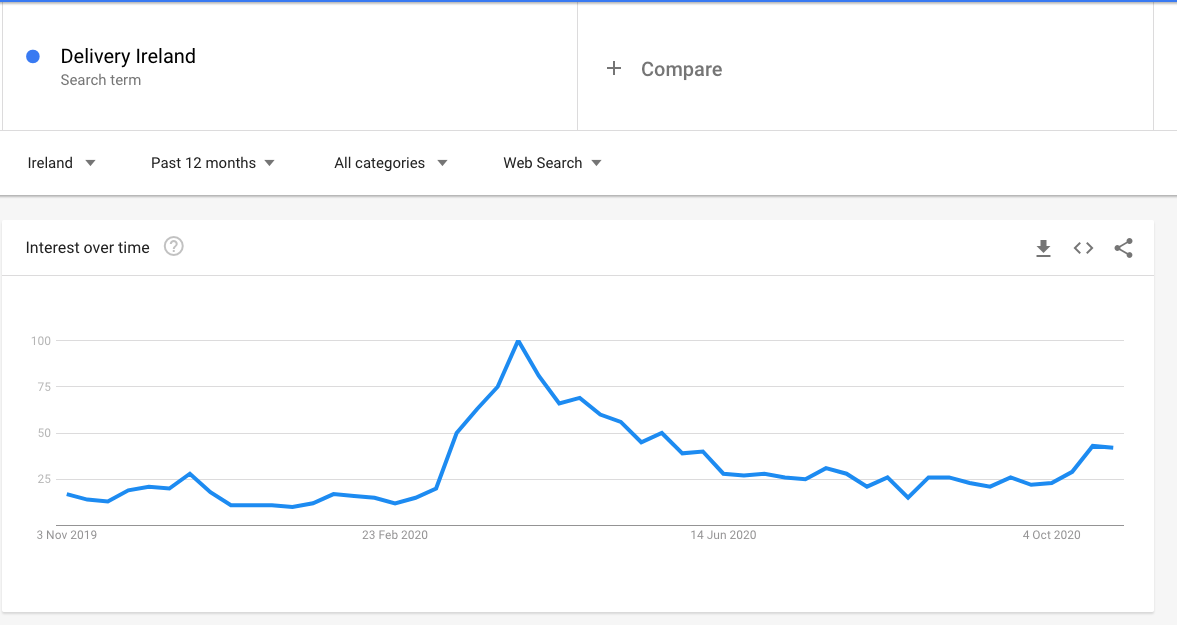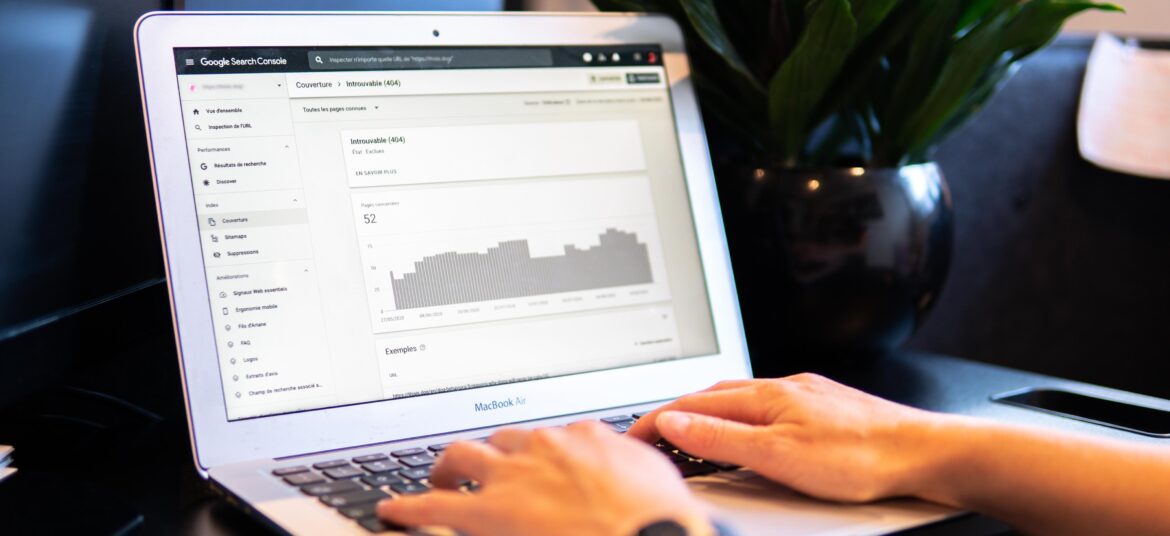As we navigate through the pandemic, SMEs who implemented a new pandemic-focused digital marketing strategy are now in a good position.
Recently, I listened to colleagues in the Regional Skills West Sales Professionals Network share their thoughts and views on how the COVID-19 pandemic had affected SMEs with a particular focus on marketing and sales.
I started to think about some of my own clients and the journey they've been on since the virus arrived in Europe in early 2020.
Of course, the experience is quite different depending on what industry you are. Some companies in the healthcare space have thrived, while others in industries like tourism and travel have been left waiting for "normality" to return so they can begin to recover.
As we enter the ninth month of the global pandemic, there is a trend that I can draw from working with my digital marketing clients that doesn't seem to be conditioned by industry and holds strong regardless of what a company is selling.
I have found that: SMEs who accepted that the pandemic wasn't going to be a brief blip and implemented a digital marketing plan accordingly are starting to thrive.
This means that other businesses who decided to lay low and wait for the pandemic to pass are still in limbo, waiting for a sign that market conditions have improved and they can start trading again as normal. That sign may never come.
Like a lot of people, I hoped the lockdowns and restrictions would be a brief blip and that after a few months of watching Netflix, running 5kms for charity and learning how to cook, we'd all revert to our normal lives.
While that prospect still gives hope, we know now that it's impossible to put a time or date on when the pandemic will end. SMEs who implemented a new pandemic-focused digital marketing strategy that is sustainable beyond 2020 are now in a good position.
But all is not lost for businesses who are still relying on their old approach to digital marketing.
There is still time to pivot and avail of the new opportunities that have been created as a result of the pandemic. Businesses that now begin the process of accepting that the old ways of selling might not come back can reacquire relevance and revenue as the pandemic draws on.
Here's some digital marketing opportunities that can help businesses get ahead of slow competitors who have put things on hold until a vaccine is found.
1. Start Selling Online

More people are shopping online than ever before. According to new data from IBM's U.S. Retail Index, the pandemic has advanced the move from physical shopping to online shopping by five years.
During the first wave of lockdowns across the world, online purchases surpassed the levels seen during the Christmas period in 2019.
Don't let people tell you it's a huge project or that it's too much hassle to start a website with an online store. It's not.
If you only sold your products or services from a physical location before the pandemic, the internet is your new premises for the foreseeable future.
Grants and financial supports are available for companies who want to start offering products or services via a website. See here for information on Ireland's Trading Online Voucher where up to 2,500 euro can be granted for the development of an e-commerce store.
You don't have to offer the same products and services you sold before the pandemic. Think about offering products or services that stay true to your brand but that might be in demand at the moment, especially as Christmas approaches. Consider the conditions of current restrictions and the fact that people cannot travel, must work from home and think about how society has had to adapt to the pandemic.
Some of my clients have started to offer 'virtual' versions of services which were previously delivered in-person and while the up-take was slow initially, buyers are now realising that the virtual version may be the only version available to them for quite a while.
2. Experiment with PPC Ads

Pay-per-click ads are cheap at the moment and there are some very lucrative new keywords to target if you have adapted your product or service for the pandemic. Buyers were not using words like 'remote', 'virtual', 'online' when searching for services before Spring 2020 and companies have been slow to bid for keywords related to new digital services despite demand increasing. This means competition is still low.
There's also an opportunity to target local markets with Google Ads in the midst of ongoing campaigns to persuade people to 'Shop Local' at Christmas.

Searches for the key phrase 'Delivery Ireland' peaked during the week of 5-11 April and has seen a spike again in early October with fresh Coronavirus restrictions announced.
3. Invest in SEO

A client of mine made the decision soon after the pandemic hit to completely change their business model to 'digital-first' which meant redesigning their website, adding an e-commerce store to take payments online, writing new SEO-focused copy targeting pandemic-related keywords and developing rich media like video to demonstrate how their business is solving problems that have been created by the pandemic.
The result?
Their website has gone from being a low-traffic Where's Wally experiment to being in the top 3 listings on the first page of Google for all of the new keywords they are targeting, and traffic is increasing week-by-week, along with enquiries.
They had the foresight and drive to build website content focusing on a virtual experience that people hoped they wouldn't have to invest in because the pandemic would be over. Fast forward six months and this virtual experience is getting more popular by the week as restrictions banning social interactions are restored.
Keyword research is important here. Many businesses assume what people are searching for and then try to craft their content and website around those assumptions. Google offers a keyword research database (to those with an Ads account) and the Google Search Trends site is insightful when it comes to consumer interaction with search engines.
There are also some great new opportunities to build links back to your website. A number of websites promoting local businesses have emerged (such as Support Galway), listing companies who are selling online in the local area. It's normally free to submit your listing and is a new source of traffic, as well as contributing to your backlink score.
4. Offer your experience and knowledge to help others

With people spending more time at home and unemployment a real consequence of the pandemic, think about how your business could help others to develop or grow their skills. This can do wonders for brand recognition as well as creating a new revenue stream if your skills are in demand.
The demand for professional development webinars and classes has increased. Could you use your industry expertise to share any tips or advice for people looking to grow their experience? Consider how this could be monetized and scaled.
According to the European Centre for the Development of Vocational Training (CEDEFOP), there was a clear rise in searches for 'e-learning', 'online course' and 'online training' in 2020 that coincides with the outbreak of the coronavirus pandemic.
A client of mine who previously delivered face-to-face training in locations around Ireland spent the lockdown period transforming their training course into an online programme that could be downloaded from a new website which was also launched during the pandemic. Suddenly, the training which could previously only be accessed in a physical location in Ireland was now being undertaken by new customers in the UK who had found the website online.
The beauty of an online course is that once it is launched and available, the administrative burden is minimal compared with selling a course that is then delivered in a face-to-face setting. There's significant potential for the course to be sold and delivered without intensive day-to-day management, allowing you to focus on other things.
5. Ask for help
There's no shame in asking for help.
Offline marketing has been sustainable for many businesses who have grown via referrals, print advertising, direct mail and cold calls. That will continue. COVID-19 has not killed offline marketing but it has triggered a huge customer migration from offline to online.
Businesses that are still relying on offline tactics to target customers who are now making more online purchasing decisions than ever before can't afford to sit idle and wait for it all to pass.
If embracing digital marketing scares you because you know you can't implement or manage it effectively by yourself or you don't have the expertise on your in-house team to engage with digital marketing tactics, there is so much help at hand.
Unfortunately, many marketing, creative and sales professionals were the first ones to be cut from the salary bill when companies realised that the pandemic was a threat to viability. The pool of skilled and qualified talent available to help SMEs has increased. The shift to remote working means that the relationship between a business and a freelancer can offer flexibility for both parties.
Websites like Upwork and Fiverr allow SMEs to post their requirements or a specific task and freelancers can then pitch for the work. If using these platforms, don't be lured in by the cheapest option; the low price can sometimes be accounted for in the standard of work delivered.
You'd be surprised at how much work is outsourced by growing businesses. There are plenty of companies who are implementing a fully fledged integrated marketing plan without employing any in-house marketing staff.
A common thread with poor quality or low ranking SME websites is the decision for the senior leadership team or founder to build the website themselves. While it seems like a cost-saving measure, it can be counterproductive and painstaking, especially if you have no experience building SEO-driven websites. There are so many reasons why this is normally a bad idea for small businesses.
If you don't know your SEO from your PPC or your marketing tactics from your marketing strategy, talk to someone who does and avail of the talent pool available to SMEs at the current time.
Conclusion
The COVID-19 pandemic has been challenging for small businesses, especially those without an online presence. In my work with SMEs, I've started to notice that those who embraced the challenges of the pandemic early on are now starting to thrive while those who didn't act are still stuck in a rut.
It's not too late to engage with the opportunities in digital marketing that have been brought on by the conditions of the Coronavirus pandemic.
If you think I've missed opportunities off the list, drop a comment below. I'd love to hear about some other trends you've noticed in digital marketing since the pandemic started.
If you'd like to chat about any of the above in more detail, get in touch by e-mail.